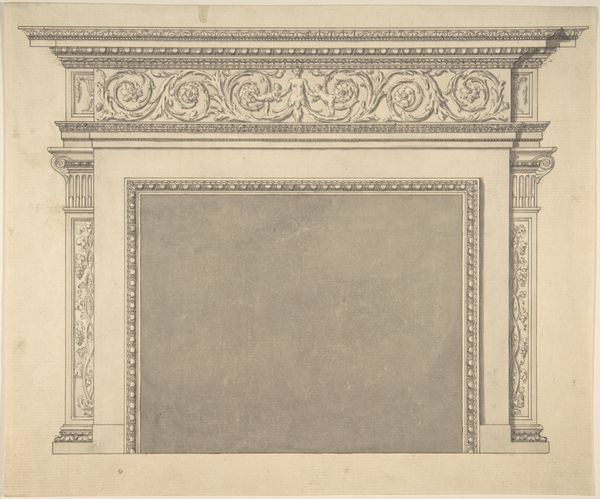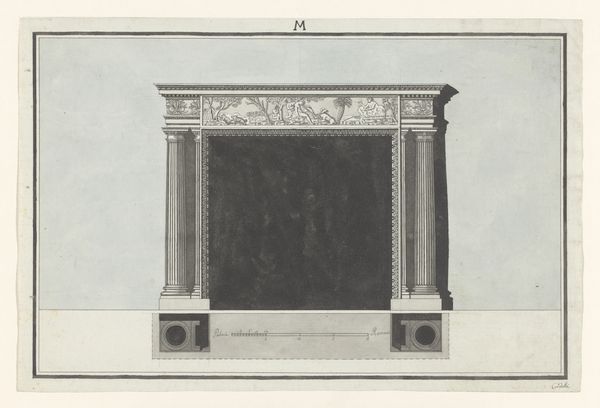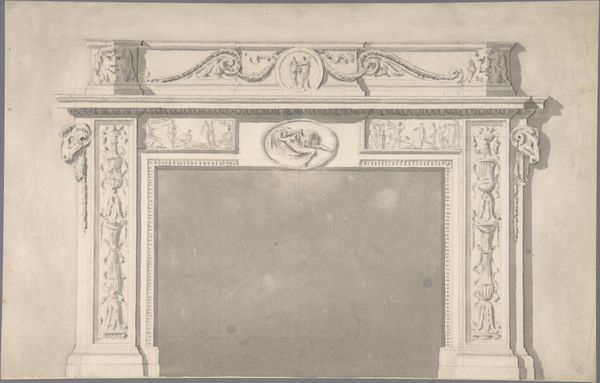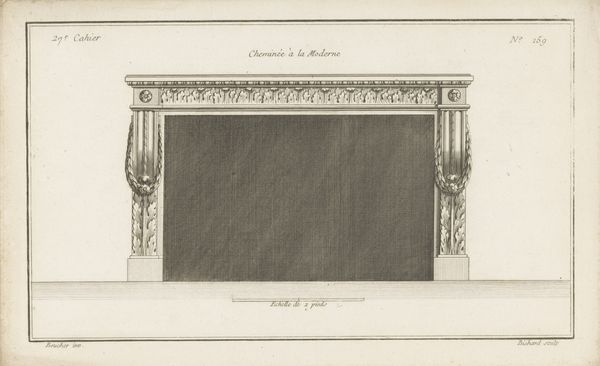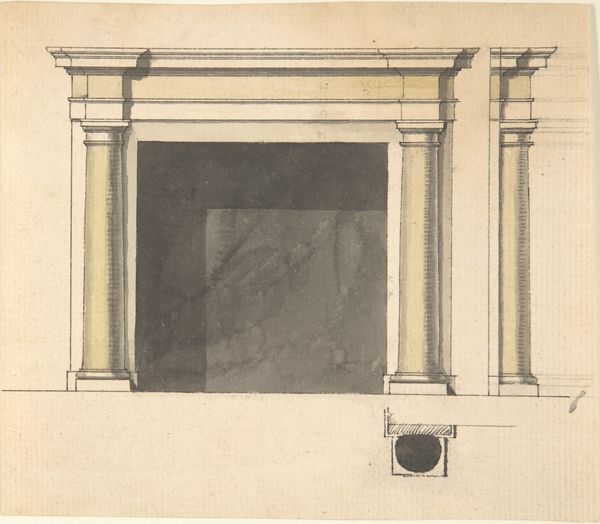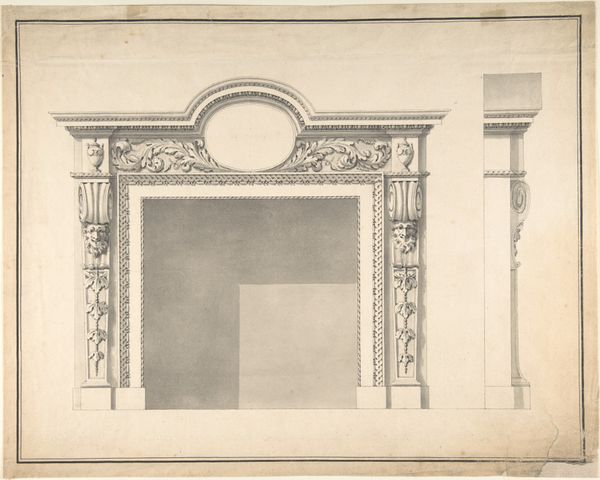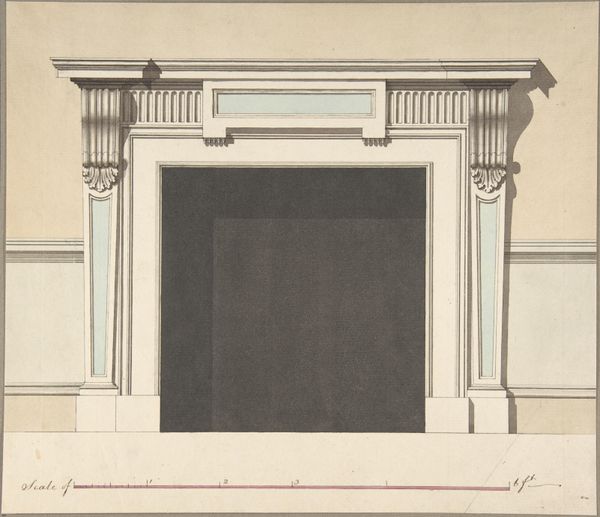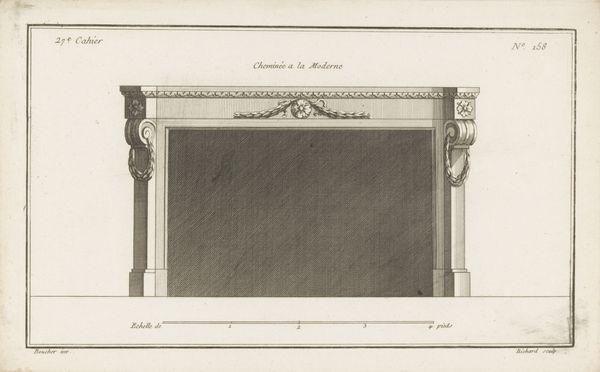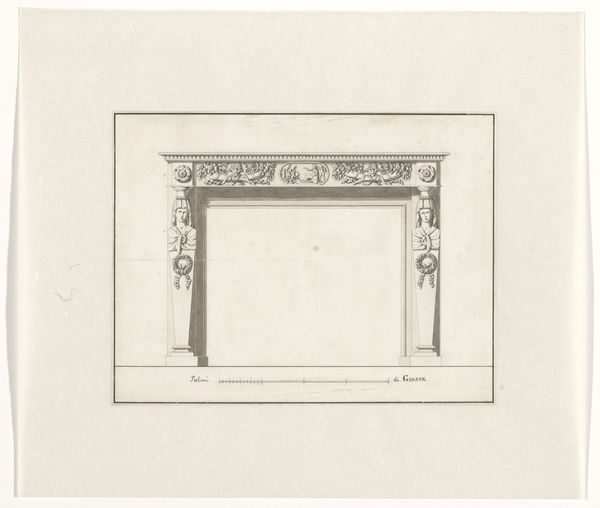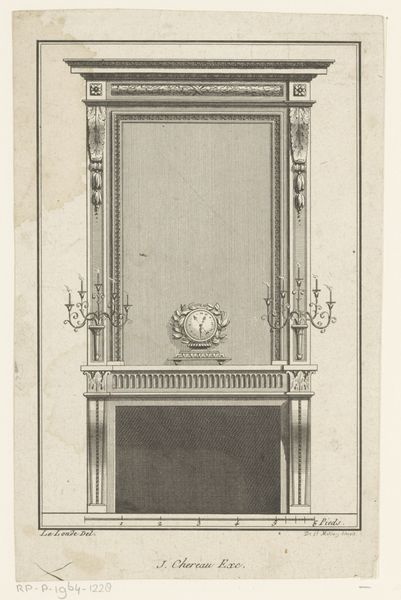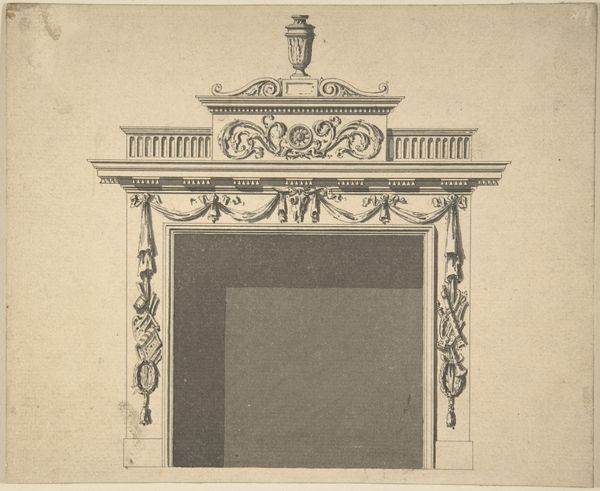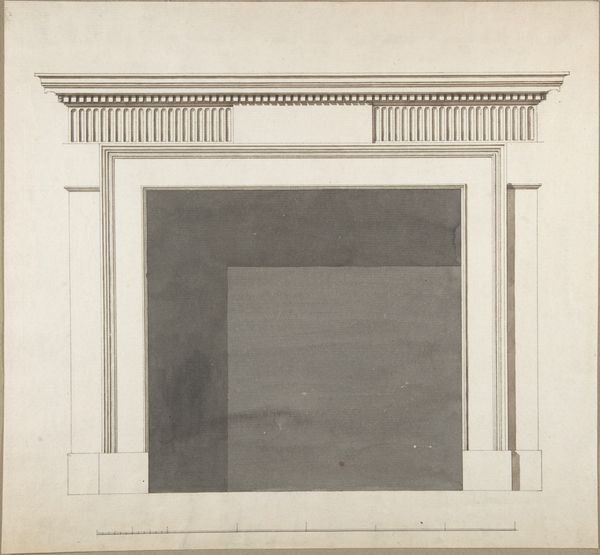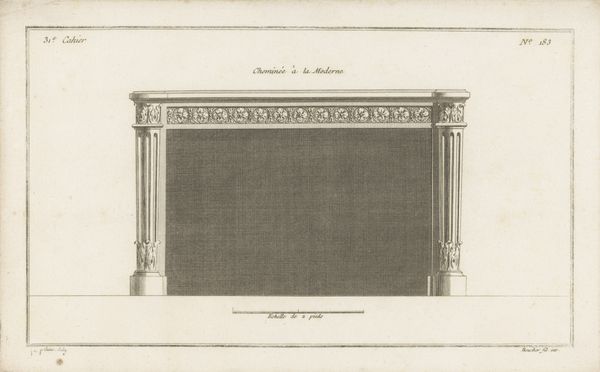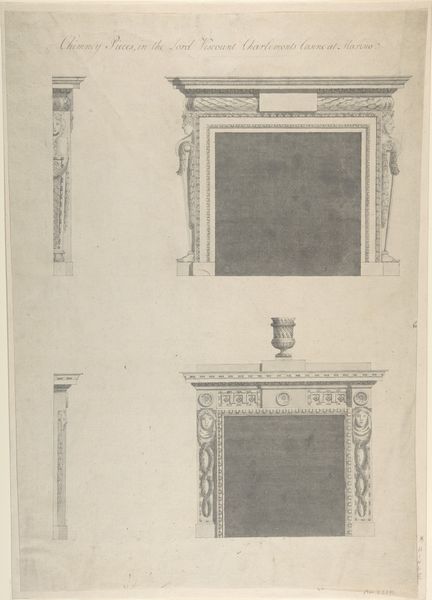
A New Collection of Chimney Pieces, Ornamented to the Style of the Etruscan, Greek and Roman Architecture; Containing Thirty Six Designs suitable to the most Elegant Range of Apartments 1781
0:00
0:00
drawing, print, engraving, architecture
#
drawing
#
neoclacissism
# print
#
geometric
#
history-painting
#
academic-art
#
engraving
#
architecture
Dimensions: book (volume closed): 50.5 × 33.5 × 2 cm (19 7/8 × 13 3/16 × 13/16 in.)
Copyright: National Gallery of Art: CC0 1.0
Editor: This engraving from 1781 by George Richardson, titled "A New Collection of Chimney Pieces," depicts an ornate fireplace design, and strikes me as incredibly formal, almost austere. What kind of statement was it making at the time? Curator: It reflects the prevailing Neoclassical aesthetic, which consciously revived the architectural and decorative ideals of ancient Greece and Rome. These designs showcase the influence of classical motifs, reflecting a broader societal desire to connect with the perceived order and rationality of those historical periods. Consider how this idealised classicism presented a vision of civic virtue. Editor: So it wasn't just about aesthetics? Curator: Not at all! Neoclassicism emerged partly as a reaction against the Rococo style's perceived frivolity. The fireplace, a central element of the home, became a stage to display social aspirations and intellectual leanings. Can you see how the print acts as a signifier of cultivated taste? Editor: Yes, the geometric patterns and classical figures definitely speak to that. But how accessible were designs like these, really? Curator: That's an important point. While these designs could be widely circulated as prints, the execution of such an ornate fireplace would be costly, accessible only to affluent households seeking to embody the Neoclassical ideal and demonstrate social status through architectural statements. It played a role in visualising hierarchy and projecting cultural capital. Editor: I see it now. So this image functions almost as an advertisement, then, speaking to a very specific audience and reinforcing existing social structures? Curator: Precisely. It prompts us to think about who had access to such artistic visions and whose stories were being told – or not told – through such displays of cultural power. Editor: It's amazing how much history is embedded in just a fireplace design! Thanks for clarifying all this. Curator: My pleasure. Always consider what is visible, and also who it's meant for, and why.
Comments
No comments
Be the first to comment and join the conversation on the ultimate creative platform.
